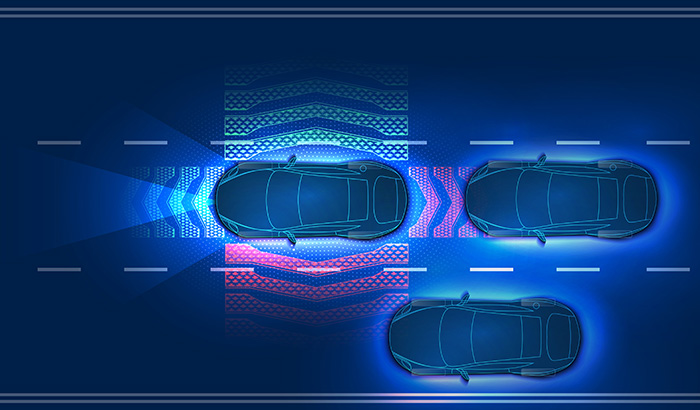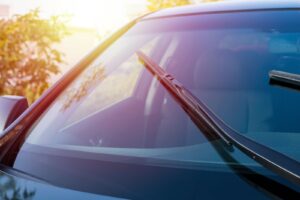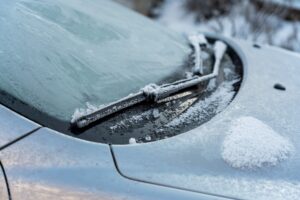First things first, what is an ADAS sensor?
An Advanced Driver Assistance System (ADAS) sensor is a critical component of modern vehicles, designed to enhance driving safety and convenience by integrating various sensors and technologies.
ADAS sensors gather real-time data from the vehicle’s surroundings and provide input to the vehicle’s control systems, assisting the driver in making informed decisions. These sensors play a pivotal role in features like adaptive cruise control, lane departure warning, automatic emergency braking, parking assistance, and more.
Common types of ADAS sensors include radar sensors, LiDAR (Light Detection and Ranging) sensors, ultrasonic sensors, and cameras. The data collected by these sensors helps the vehicle identify objects, pedestrians, road markings, and other vehicles, facilitating more precise control and response mechanisms.
Here are 30 common questions about ADAS sensors answered:
1 – Why would someone want an ADAS sensor for their vehicle?
- These sensors enhance driving safety and convenience by providing real-time data and assistance in various scenarios. They increase driver safety and reduce the likelihood of collisions.
2 – What types of sensors are used in ADAS systems? ADAS systems employ a combination of sensors, including:
- Cameras: These capture visual data to detect objects, lanes, traffic signs, and pedestrians.
- Radar: Radar sensors emit radio waves and analyze the reflected signals to measure distances, speeds, and angles of surrounding objects.
- Lidar: Lidar sensors emit laser beams to create detailed 3D maps of the surroundings, enabling precise object detection and depth perception.
- Ultrasonic sensors: These emit sound waves to measure distances from nearby obstacles, helping with parking and low-speed maneuvering.
3 – What is the purpose of an ADAS sensor?
- The primary purpose of ADAS sensors is to improve safety enhance efficiency. They provide critical data that enables features like lane departure warnings, adaptive cruise control, and parking assistance.
4 – How does an ADAS camera work?
- ADAS cameras capture visual information from the environment. Computer algorithms analyze the images to identify objects, lanes, road signs, and pedestrians. Cameras are crucial in lane keeping, traffic sign recognition, and pedestrian detection.
5 – What does a radar sensor do in an ADAS system?
- Radar sensors emit radio waves and measure the time it takes for the waves to bounce back after hitting an object. This data helps calculate distances, speeds, and angles of nearby vehicles and obstacles. Radar is pivotal for adaptive cruise control, collision avoidance, and blind-spot monitoring.
6 – What is lidar used for in ADAS technology?
- Lidar sensors emit laser beams and measure the time it takes for the light to return after hitting an object. This technology creates detailed 3D maps of the surroundings, offering high-resolution object detection, accurate distance measurement, and advanced obstacle avoidance.
7 – How do ultrasonic sensors contribute to ADAS functionality?
- Ultrasonic sensors emit sound waves that bounce off nearby objects and return to the sensor. By measuring the time it takes for sound waves to travel, these sensors provide distance information, helping with parking and slow-speed obstacle detection.
8 – What is adaptive cruise control, and how does it rely on ADAS sensors?
- Adaptive cruise control adjusts the vehicle’s speed to maintain a safe following distance from the vehicle ahead. It relies on radar or lidar sensors to continuously monitor the distance and speed of surrounding vehicles.
9 – Can ADAS sensors recognize pedestrians and cyclists?
- Yes, many ADAS sensors, particularly cameras and lidar, are designed to recognize pedestrians and cyclists. These sensors analyze visual data to identify human shapes and movement patterns, enabling collision avoidance and driver alerts.
10 – How do lane departure warning systems work with ADAS sensors?
- Lane departure warning systems use cameras to monitor lane markings on the road. If the vehicle drifts out of its lane without signaling, the system alerts the driver through visual or audible cues.
11 – What is automatic emergency braking, and how does it use ADAS sensors?
- Automatic emergency braking utilizes sensors to detect imminent collisions. If the driver doesn’t react in time, the system applies the brakes autonomously to prevent or mitigate the impact.
12 – Do ADAS sensors work in all weather conditions?
- ADAS sensors may experience limitations in adverse weather conditions. For instance, heavy rain, snow, fog, or glare from the sun can affect the performance of cameras and lidar, reducing their effectiveness temporarily.
13 – Can I rely solely on ADAS sensors for driving safely?
- ADAS sensors are designed to assist drivers, not replace their attention. While these systems enhance safety, drivers should always remain alert, as unexpected scenarios may arise that require human intervention.
14 – How do parking assistance features use ADAS sensors?
- Parking assistance features utilize ultrasonic sensors to measure distances between the vehicle and nearby obstacles. This data is then used to provide visual or audible cues to the driver, helping them navigate tight spaces safely.
15 – What is blind-spot monitoring, and how does it work with ADAS sensors?
- Blind-spot monitoring uses radar or cameras to detect vehicles in adjacent lanes. When a vehicle is in the blind spot, the system alerts the driver, enhancing safety during lane changes
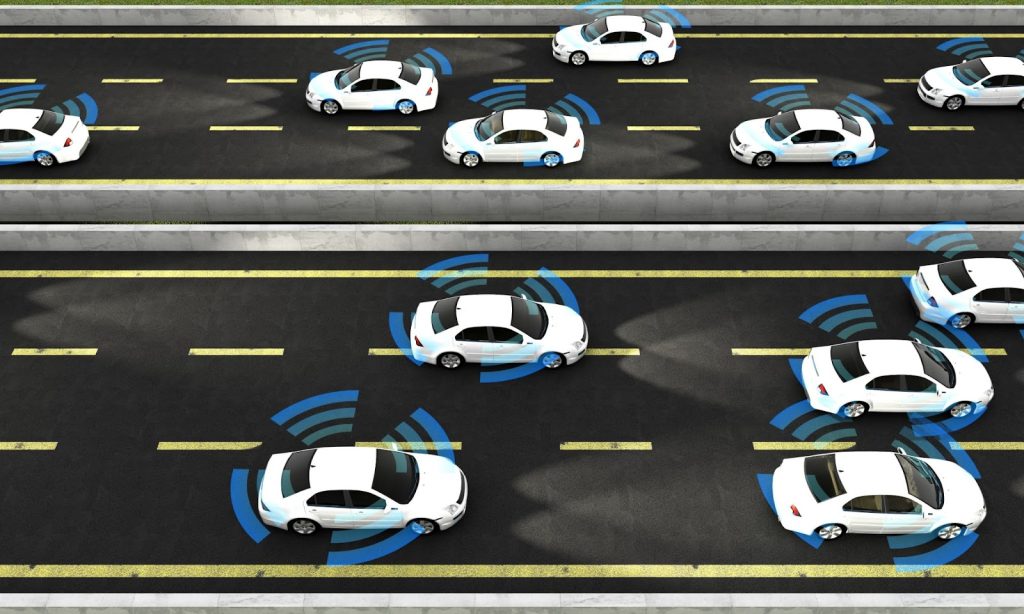
16 – Do ADAS sensors require regular maintenance?
- Yes, ADAS sensors require periodic maintenance. Keeping sensors clean and free from dirt, debris, or obstructions ensures accurate data collection and reliable performance.
17 – Can ADAS sensors be calibrated?
- ADAS sensors require calibration after certain repairs or maintenance procedures. Calibration ensures that the sensors are accurately aligned to provide reliable data for safety systems.
18 – What’s the difference between passive and active ADAS sensors?
- Passive ADAS sensors collect data without driver intervention and provide information for driver alerts. Active sensors directly influence the vehicle’s behavior, such as adjusting speed, steering, or braking.
19 – How does ADAS contribute to autonomous driving?
- ADAS technologies serve as the foundation for autonomous driving. They provide vehicles with the necessary data and capabilities to navigate, make decisions, and respond to the environment without human intervention.
20 – Are ADAS sensors integrated with the vehicle’s navigation system?
- Yes, ADAS sensors can communicate with the vehicle’s navigation system. This integration enhances features like adaptive cruise control, which adjusts speed based on road conditions and route information.
21 – Do ADAS sensors have a limited detection range?
- Yes, ADAS sensors have specific detection ranges based on their technology. Radar sensors typically have longer detection distances compared to cameras, which are more suitable for close-range object recognition.
22 – What safety standards govern ADAS sensor performance?
- ADAS sensor performance is regulated by safety standards such as ISO 26262. This standard outlines functional safety requirements for automotive systems, ensuring that sensors meet specific safety criteria.
23 – Can ADAS sensors recognize traffic signs and signals?
- Yes, some ADAS cameras are equipped with image recognition algorithms that can identify and interpret traffic signs and signals. This information is relayed to the driver through the vehicle’s display.
24 – How does ADAS handle complex urban driving scenarios?
- ADAS sensors are designed to handle various driving scenarios, including complex urban environments. They can detect pedestrians, cyclists, obstacles, and road signs, enhancing safety and situational awareness.
25 – Are there any privacy concerns related to ADAS sensors?
- Yes, ADAS sensors can capture detailed visual and spatial data from the surroundings. This data could potentially raise privacy concerns if it’s misused or mishandled by third parties.
26 – Do ADAS sensors require special calibration tools?
- Yes, ADAS sensors often require specialized calibration tools and equipment. Proper calibration ensures accurate alignment and optimal sensor performance after repairs or maintenance.
27 – What is sensor fusion in ADAS technology?
- Sensor fusion combines data from multiple ADAS sensors to comprehensively and accurately represent the vehicle’s environment. This fusion enhances the overall reliability of the information used for decision-making.
28 – How do ADAS sensors contribute to reducing accidents?
- ADAS sensors provide real-time data and assistance to drivers, helping them avoid collisions through automatic braking, lane-keeping assistance, and collision warnings.
29 – Can ADAS sensors operate in conjunction with driver assistance software?
- Yes, ADAS sensors provide essential data for driver assistance software to make informed decisions and provide timely alerts to the driver. These systems work together to enhance safety.
30 – Are ADAS sensors standardized across all vehicle manufacturers?
- While there are industry standards for ADAS technologies, implementation can vary among vehicle manufacturers. Different manufacturers may prioritize different features, resulting in variations in sensor performance and capabilities.
I hope the answers to these questions have greatly improved your grasp of what an ADAS sensor entails and its significance in modern vehicles. Suppose this newfound knowledge has inclined you towards equipping your vehicle with this technology. In that case, it’s essential to emphasize the crucial role of enlisting a skilled professional to handle the installation process.
By doing so, you ensure the optimal functionality and effectiveness of the ADAS sensor while guaranteeing a safe and accurate integration into your vehicle’s systems. The complexity of these sensors underscores the necessity of professional expertise to make the most of their potential benefits for your driving experience.
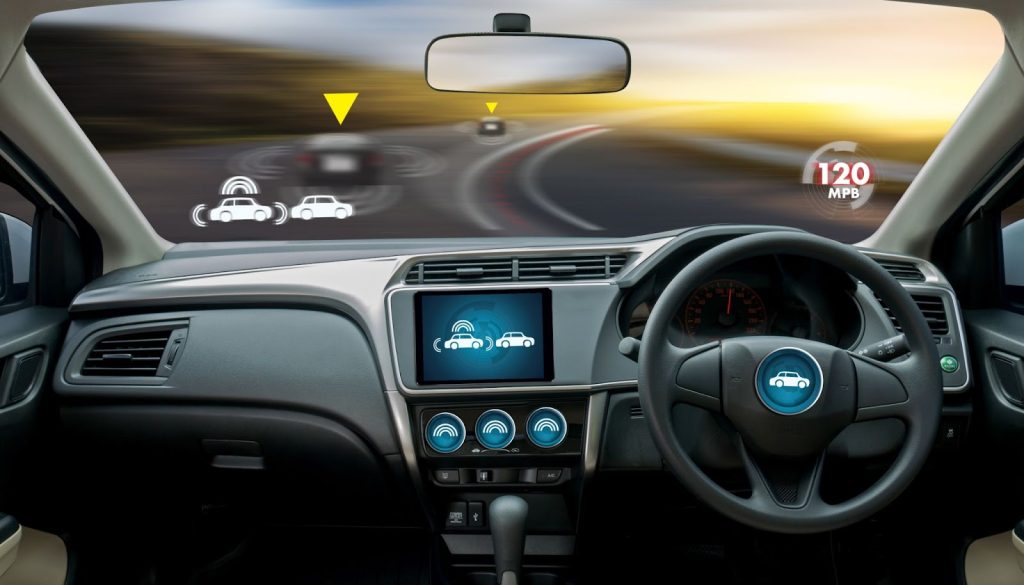
Here’s what you get when hiring a professional to install your ADAS sensor:
- Expertise: Professionals possess in-depth knowledge of sensor technology and installation techniques, ensuring sensors are installed correctly to function optimally.
- Accuracy: Precise sensor installation is critical for accurate data collection. Professionals understand the optimal sensor positioning and alignment required to achieve reliable results.
- Calibration: Proper calibration is essential for sensor accuracy. Professionals have the expertise to calibrate sensors correctly, ensuring they provide consistent and reliable readings.
- Safety: ADAS sensors play a crucial role in driver safety. Professional installation reduces the risk of sensor malfunctions that could compromise safety features like automatic emergency braking or collision warnings.
- Compatibility: Different vehicles and sensor models require specific installation procedures. Professionals have the knowledge to select and install sensors compatible with the vehicle’s systems and architecture.
- Warranty: Many vehicle manufacturers require professional installation to maintain warranties. Professionals ensure installation adheres to manufacturer guidelines, protecting your vehicle’s warranty.
- Equipment: Professionals can access specialized tools and equipment designed for sensor installation and calibration. These tools are necessary for achieving precise results that meet industry standards.
- Testing: After installation, professionals conduct comprehensive testing to verify that sensors are working as intended. They promptly identify issues and ensure the sensors respond correctly to various scenarios.
- Knowledge: Professionals stay updated on the latest advancements in sensor technology, installation procedures, and safety regulations. This knowledge ensures that your vehicle benefits from the most current practices.
- Time-saving: Professionals are experienced in sensor installation, allowing them to complete the process efficiently. This saves you time and reduces the risk of errors associated with DIY installation.
- Reliability: Improperly installed sensors have the potential to result in malfunctions and trigger false alerts, which could compromise the overall functionality of your ADAS system. However, by enlisting the expertise of professionals, you significantly mitigate the chances of encountering such problems. Their expertise in installation procedures ensures that your sensors are meticulously positioned and calibrated, granting you a heightened level of confidence in the reliability of these sensors during your driving experiences. This, in turn, contributes to a safer and more seamless interaction with your vehicle’s advanced safety features.
- Integration: ADAS sensors need to be seamlessly integrated with your vehicle’s existing systems. Professionals have the expertise to effectively connect sensors to the onboard computer and other components.
- Resale value: Professional installation can help maintain your vehicle’s resale value. When potential buyers see that ADAS features are installed correctly, they are more likely to perceive the vehicle as well-maintained.
- Manufacturer guidelines: Professionals follow manufacturer-recommended installation procedures. This ensures that sensors are installed in a way that aligns with the manufacturer’s design intent.
- Complexity: ADAS sensor installation can be complex due to the intricate technology involved. Professionals have the experience and training to navigate this complexity and perform accurate installations.
- Safety standards: Professional installers adhere to safety standards and regulations when installing ADAS sensors. This compliance helps ensure the safety and reliability of the sensors’ operation.
- Data accuracy: The accuracy of data directly hinges on correct installation procedures. Professionals strategically position sensors to capture pertinent data points with precision, thus amplifying the effectiveness of ADAS features.
- Longevity: Correct installation extends the lifespan of sensors and their components. Professionals take care to secure sensors properly, preventing premature wear and damage.
- Environmental factors: Professionals consider environmental factors affecting sensor performance, such as sunlight glare or weather conditions. This consideration ensures consistent functionality.
- Legal compliance: Some jurisdictions have regulations regarding the installation of ADAS sensors. Professionals are knowledgeable about these regulations and ensure that your vehicle complies with them.
Need an ADAS Windshield Installed? Utah Mobile Auto Glass Can Help
Cracks in your windshield can happen anytime, potentially causing your vehicle’s ADAS systems to malfunction. Cracked windshields should be replaced as soon as possible, as they can obstruct your view and potentially lead to an accident. ADAS calibrations need to be done after replacing a windshield.
We take great pride in our work and the reputation we have built over the years. Based in Sandy, Utah, we provide excellent ADAS windshield services throughout Salt Lake County and Utah County, including Bountiful, Utah.
When you choose to work with us, you can expect nothing less than exceptional customer service and complete transparency throughout the entire process. Contact us today, and let’s get you back on the road as soon as possible.
toto slot

